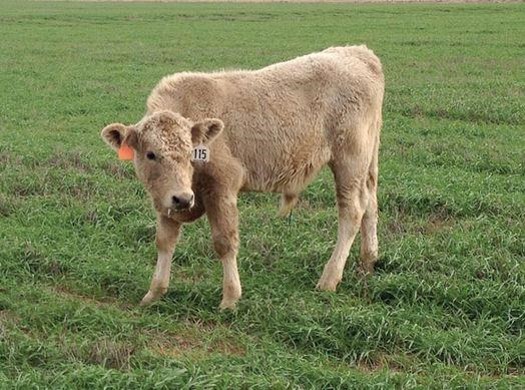

Dr. Troy Rowan
Assistant Professor
UTIA Genomics Center for the Advancement of Agriculture
P: 865-974-3190
Originally Published in Cattlemen’s News:
With recurrent droughts in the western U.S., the nation’s cowherd inventory is at an all-time low. Consistently high prices from feeder calves to cull cows and record-high input prices have made many operations reconsider their place in the business. If you’re reading this, you’ve likely decided to stay in the business. That’s a good thing! The current market presents several opportunities to do a genetic overhaul of your herd, allowing us to build back for what will inevitably be a more challenging few years ahead in the business.
Culling considerations
At the time of writing, cull cow prices are hovering around $130/cwt, and that trend does not look like it will change much over the next few months. Knowing that we can recoup substantial value while replacing them with a newer model makes letting go of marginal cows a little easier. A more thorough cull during periods of high prices also presents an opportunity to understock, allowing our land and natural resources to recover a bit.
“Which cow(s) should we cull?” is a question that deserves thorough consideration. Some culling decisions are easy. Open cows at preg check are easy to load on the trailer, as are those with structural soundness, disposition, or udder issues. Once we make these easy decisions, identifying the next tier of animals that we should move on from can be a bit less clear.
Without production records, culling underperforming cows is a difficult task. Recording weaning weights is the easiest way to understand how a cow performs across seasons. As a rule of thumb, we would like a mature cow to wean off half its body weight in calf. Cows that severely underperform on this basis should be candidates for letting go, as should those older cows where we see a drop off in productivity occurring. Being able to reach back through historical performance information also tells us where we should focus our efforts on genetic improvement.
Set the stage for a genetic overhaul.
High prices are great, but it is essential that we keep sight of the costs that our herd incurs, especially those related to heifer development and cow maintenance. Input costs have remained high, and it is hard to imagine that they will change anytime soon. Protecting our herds from softer prices in future years will be necessary. Whether we’ve downsized or held our numbers constant, this inflection point in the markets also allows us to overhaul our herd genetically.
The most significant driver of cow-calf profitability is cow longevity. It takes 6+ years for a cow to recoup costs associated with development and maintenance. Animals that fail to reach this age without missing a calf struggle to ever become profitable. As we build back our herd during the current period, we must consider the future, with cow longevity on our minds. The breeding decisions we make now will have a multi-generational impact, transcending these market fluctuations, particularly in the females we choose to retain.
The best cow starts with the right bull.
As we make bull purchasing decisions, we must remember two primary tools. The first is selecting bulls with genetic potential to make these productive and long-lived daughters. Many breeds have direct predictions in the form of EPDs for longevity (i.e., Stayability, Functional Cow Longevity, Sustained Cow Fertility). These tools are especially useful because bulls will never express these phenotypes themselves, and by the time we know how daughters function in the latter part of their productive lives, the bull will be long gone. The more cows we have that exist past their payback periods, means we will have to develop fewer heifers and have more calves to market at the end of the year.
The ideal way to use these tools is when they are integrated into an economic selection index. These indexes weight traits by their relative economic importance based on long-term industry trends. These indexes allow us to emphasize multiple traits when making a decision by appropriately weighting them based on profit potential. This allows us to make directional progress on multiple traits that affect profitability. As markets fluctuate and input costs continue to climb, making sure that our breeding objectives take into account holistic profitability is absolutely essential.
Don’t forget about crossbreeding.
Crossbreeding is the most overlooked tool for building a cowherd that will stand the test of time. Crossbred cows, on average, will have an extra calf in their productive lives compared with straight bred females. This, coupled with the additional performance generated by direct and maternal heterosis, makes heterosis a profit booster regardless of the industry’s economic situation. As we think about rebuilding a base cowherd with an eye toward lifetime productivity, consider the benefits of purchasing first-generation crossbred females (F1). This allows us to immediately reap the benefits of heterosis and sets our herd up for long-term success. Even if purchasing crossbred heifers is not possible, making crossbreeding a priority in the next bull purchase can help put our operation on a path toward profitability.
Do it all with a plan.
As we stand in this transition period in the beef industry, we must take it as an opportunity to lay the groundwork for long-term sustainability. There is sometimes a tendency to be reactive to industry trends. The best thing that any operation can do is lay out a set of breeding objectives that guide our long-term genetic decision-making. When we understand the type of animals that make us money, we can adjust our culling, bull-buying, and crossbreeding strategies accordingly. The best breeding objectives consider traits that help an operation generate revenue (weaned calf weight, carcass weight, etc.) and those that are major cost drivers (fertility, maintenance costs, longevity). Breeding goals should also help identify areas where our herds need further improvement, as well as consistent priorities that should drive all aspects of genetic decision-making.
All of these things, when guided by a complete vision that is profit-motivated, will help our operation weather the storms that the beef industry throws at it while being prepared to take advantage of favorable markets as they arrive.